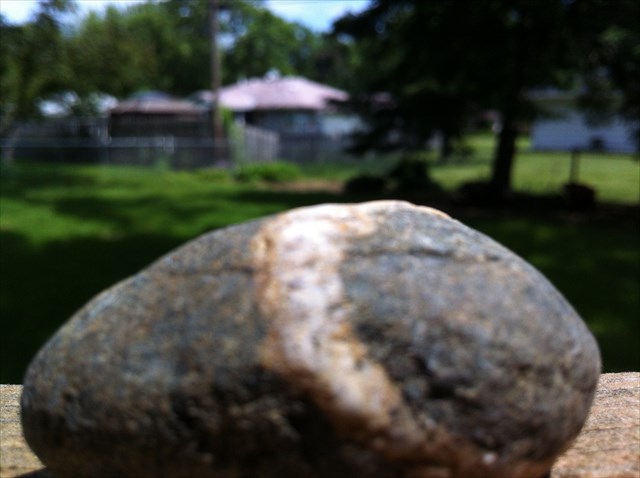Burnsville, Minnesota is located in a geographically significant spot. Burnsville is located high atop the Owatonna Moraine carved out by two glaciers, both of which converged at this location. Just to the north of this spot, the present-day Minnesota River valley was carved out by the ancient River Warren, which flowed through here.
This park contains a perfect example of a "glacier erratic." An erratic is a rock that differs in size and composition from others in the area in which it rests. The rock seen at this location is not like any of the rocks around this area. That means that this non-native rock was carried here by some other means. Some are carried by icebergs and some are carried by ancient rivers. However, this particular example was carried here by a glacier.
Beginning about 75,000 years ago, Minnesota was covered by glaciers known as the "Wisconsin Glaciation." This glaciation consisted of four lobes that extended as part of the Laurentide Ice Sheet from northern Canada. Over the course of the last 75,000 years, these glaciers extended and retreated, carving out the lakes and valleys of the state.
What makes this location unique was that there were two major lobes that met up here. One of the lobes, the Des Moines Lobe, came from the northwest. At this location, it conjoined with the Superior Lobe, which came from the northeast. Each lobe carried unique erratics. Erratics from the Des Moines Lobe originated in northern Canada and tend to be grey in color. Erratics from the Superior Lobe originated from the bottom of the ancient Lake Duluth (precursor to modern day Lake Superior) and as a result, tend to be red in color.
An interesting feature of this granite boulder is its "veining." Granite is an igneous rock composed of four minerals - quartz, feldspar, mica, and hornblende. Granite is formed deep underground as magma cools very slowly, which allows the crystals of these minerals to grow quite large and be seen easily enough by the naked eye. As the rock cools and is pushed upward by the tremendous forces of pressure under the earth's crust, cracks and fissures form in the rock. When this happens, streams of white quartz will intrude into those cracks forming veins of quartz among the rest of the granite. This rock has quite a few examples of veining which can be seen quite clearly.

An example of veining in granite. Notice the white stripe.
As the last glaciers melted a retreated from Minnesota around 10,000 years ago, they left both this erratic and many nearby kettle lakes. Now, this rock stands as a testament to the long and varied geologic history of Minnesota. And as a non-native mineral to these parts, this erratic could be considered to be one of Minnesota's earliest immigrants.
To get credit for this cache:
E-mail me with the answers to these questions using the CO link above and selecting the "Send Message" link.
1. Based on the rock's appearance and the information above, which lobe do you think was responsible for transporting this erratic - the Des Moines Lobe or the Superior Lobe?
2. Facing the rock from the north, notice the striking vein that runs vertically up the center of the rock. Estimate the width of this vein.
3. What four minerals make up granite?
4. One side of this rock appears to have more lichen growing on it than the others. Which direction does that side face?
Any posts with spoiler information will be removed!
Any posts without the required information submitted will be removed after seven (7) days!
This earthcache was placed with the permission of the City of Burnsville Parks and Recreation Department. They encourage you to visit and enjoy their parks and to please leave them in a better condition than when you found them. I am very thankful for their cooperation on not only this earthcache, but in their support of all geocaching!
References:
1. Krippner, Mark. "The Glacial Landscape of Minnesota." Emporia State University, 2011.
2. U.S. Geological Survey. "America's Volcanic Past: Minnesota." 2002.
3. Sansome, Constance Jefferson. "Minnesota Underfoot." Voyageur Press, Minneapolis, 1983.
Congrats to BigChiefS4 on the FTF! And congrats to Minnesota, who made this his 7,500th find!